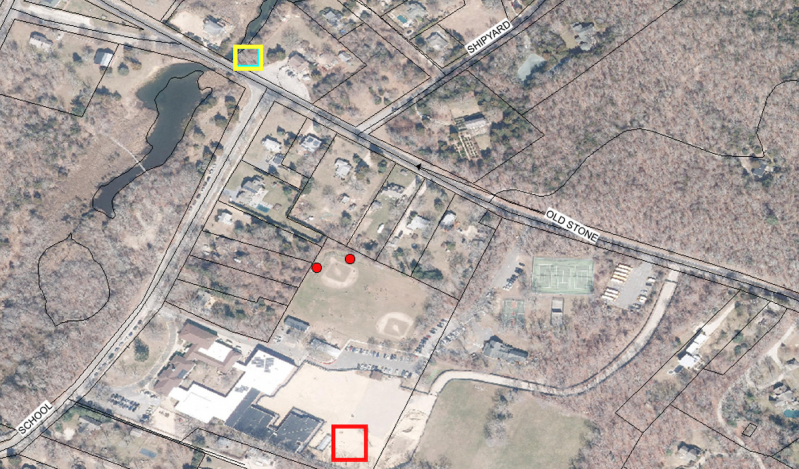As if playing a game of environmental football, Cornell Cooperative Extension scientists are hoping to intercept a large underground plume of ammonia in groundwater in Springs before it reaches the end zone — Accabonac Harbor.
Cornell’s studies have shown that the ammonia, a byproduct of human waste, has been leaching for years from old septic systems at the Springs School — before it upgraded to a new system — and from surrounding houses. If the plume is allowed to reach Accabonac Harbor, it could wreak havoc on aquatic life.
According to the federal Environmental Protection Agency, “When ammonia is present in water at high enough levels, it is difficult for aquatic organisms to sufficiently excrete the toxicant, leading to toxic buildup in internal tissues and blood, and potentially death.”
On Tuesday, Ron Paulsen, a Cornell hydrogeologist, asked the Springs School Board for permission to install two groundwater sampling wells on school grounds in an effort to prevent the plume from reaching the harbor. The goal, he explained, would be to install an underground “permeable reactive barrier” consisting of a carbon source that reacts passively with the ammonia to break it down into harmless components.
“It’s obvious that this area is part of the source,” said Mr. Paulsen, who along with a colleague, Molly Graffam, received grant money from East Hampton Town’s community preservation fund in 2021, plus additional support from the town and the Accabonac Protection Committee, for this project.
The school board was immediately supportive of the proposal, with Tim Frazier, its vice president, saying, “I’m happy that you found us and we’re in a position to be part of that.”
Mr. Paulsen acknowledged that the school’s new septic system, which has been active since January 2020, is a major step forward for the region’s water quality, but he pointed out that the district is playing catch-up from the decade prior to its installation. “It’s working better and better, but you still have 10 years of legacy” ammonia discharge, he said.
“That’s one of the main reasons we went ahead and did this new system,” Barbara Dayton, the school board president, said.
The ammonia plume has already reached the western edge of the Springs General Store property, but the scientists’ research indicates that “it is unlikely that the nitrogen plume is due to the onsite wastewater treatment from the general store,” Mr. Paulsen said.
The idea is to install two groundwater sampling wells at a depth of 50 feet outside the first and third-base lines of the softball field, which is “about the midway point of the plume travel,” Mr. Paulsen said. The wells would be closer to the property-line fences than the playing area.
The tops would sit at ground level and be capped with a flat plastic top so they don’t present a tripping hazard. “All you’ll see is the green irrigation box at grade . . . like any other irrigation box you see,” he said. “No tripping. We go to great lengths to make sure it’s safe, locked, and secure.”
The installation takes about a day and would require bringing in a pickup-truck-size vehicle called a geoprobe. Planks of plywood would be laid down to protect the field from divots.
“Everybody’s doing what they can, and this is just another effort. . . . This is long term,” Mr. Paulsen said. “We should be able to show gradual improvement, which would be great.”
As part of the project, “we can offer some outreach and education” for Springs students to learn about the work and why it’s being done, he said.
Debra Winter, the district superintendent, welcomed that offer, saying that the earth science classes could benefit from such a relationship.

